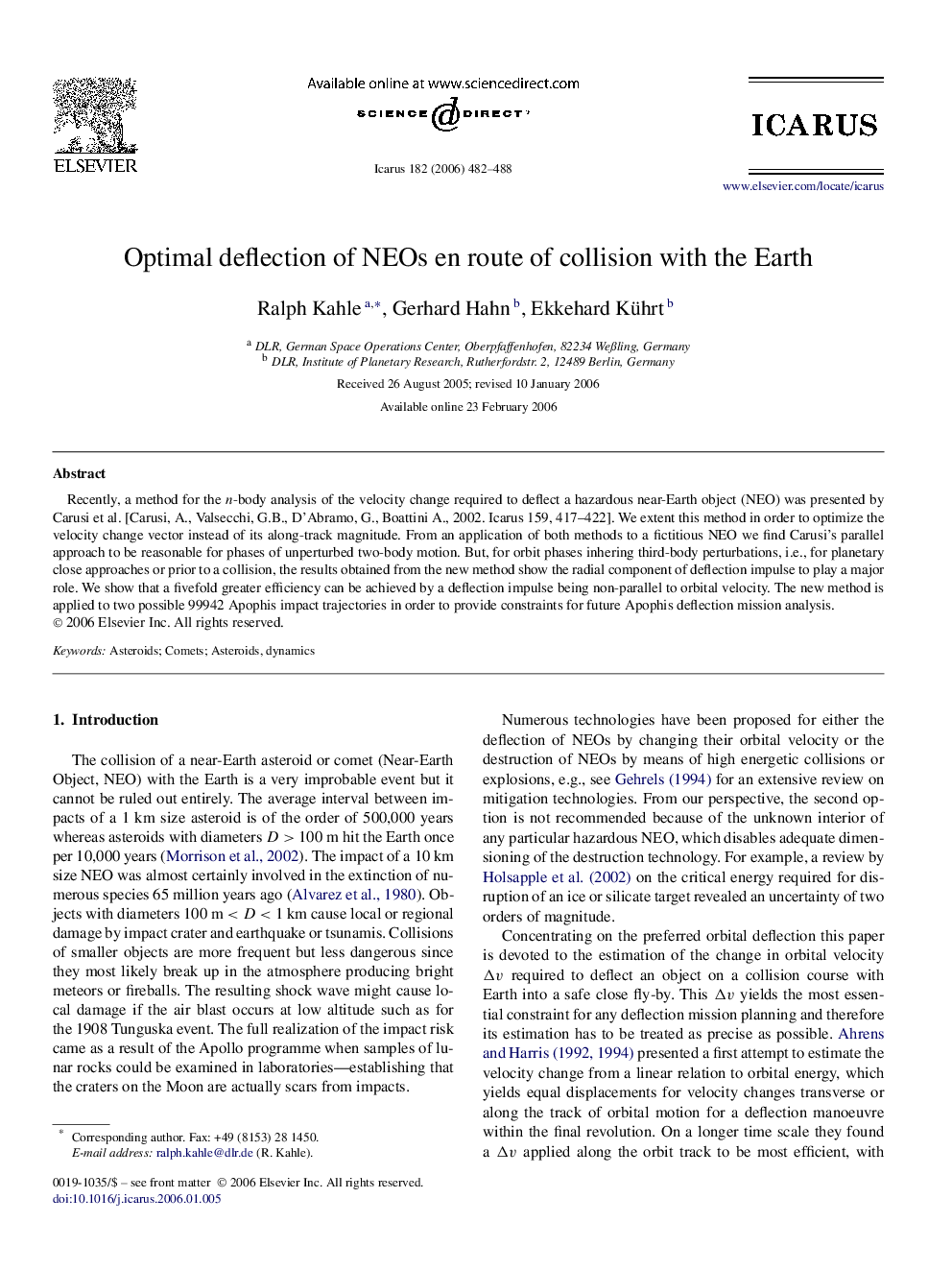| Article ID | Journal | Published Year | Pages | File Type |
|---|---|---|---|---|
| 1776118 | Icarus | 2006 | 7 Pages |
Recently, a method for the n-body analysis of the velocity change required to deflect a hazardous near-Earth object (NEO) was presented by Carusi et al. [Carusi, A., Valsecchi, G.B., D'Abramo, G., Boattini A., 2002. Icarus 159, 417–422]. We extent this method in order to optimize the velocity change vector instead of its along-track magnitude. From an application of both methods to a fictitious NEO we find Carusi's parallel approach to be reasonable for phases of unperturbed two-body motion. But, for orbit phases inhering third-body perturbations, i.e., for planetary close approaches or prior to a collision, the results obtained from the new method show the radial component of deflection impulse to play a major role. We show that a fivefold greater efficiency can be achieved by a deflection impulse being non-parallel to orbital velocity. The new method is applied to two possible 99942 Apophis impact trajectories in order to provide constraints for future Apophis deflection mission analysis.
